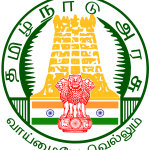
After Rolling down a ramp from the Chandrayaan-3 lander, the six-wheel 26-kg rover, which is capable of slowly moving up to 500 metres, will begin its job of lunar exploration. The landing has happened at lunar dawn, and the six payloads on board the lander and rover will start collecting data soon after to get as much science as possible in the single lunar day or 14 Earth days for which they will remain operable.
The Chandrayaan-3 payloads will further the science learnings of the two predecessor missions by studying lunar quakes, mineral compositions, and the electrons and ions near the surface of the Moon. The mission will attempt to study water-ice, the presence of which was detected by Chandrayaan-1.
Mission experiments
The lander has four experiments on board.
The Radio Anatomy of Moon Bound Hypersensitive ionosphere and Atmosphere (RAMBHA) will study the electrons and ions near the surface of the moon and how they change over time.
The Chandra’s Surface Thermo physical Fxperiment (ChaSTE)will study the thermal properties of the lunar surface near the polar region. Chandrayaan-3 has landed around 70 degree south latitude, the closest that any spacecraft has reached to the lunar south pole.
The Instrument for Lunar Seismic Activity (ILSA)will measure the lunar quakes near the landing site and study the composition of the Moon’s crust and mantle.
The LASER Retroreflector Array (LRA) is a passive experiment sent by NASA that acts as a target for lasers for very accurate measurements for future missions.
There are two scientific experiments on the rover.
The LASER Induced Breakdown Spectroscope (LIBS) will determine the chemical and mineral composition of the lunar surface.
The Alpha Particle X-ray Spectrometer (APXS) will determine the composition of elements such as magnesium, aluminium, silicon, potassium, calcium, titanium, and iron in the lunar soil and rocks.
Discovery of water
The southern polar region of the Moon is known to have deep craters that remain in permanent darkness, with a high likelihood of having water-ice.
Perhaps the most important discovery made by instruments on board Chandrayaan-1 was the discovery of water and hydroxyl (OH) molecules in the Moon’s thin atmosphere (exosphere) as well as on the lunar surface.
India’s Moon Impact Probe (MIP)-a payload that was deliberately crashed on the lunar surface near the south pole-helped study the concentration of water and hydroxyl molecules in the lunar atmosphere.
Another payload called mini-SAR helped detect the subsurface deposits of water-ice in the permanently shadowed regions within the craters near the south pole.
A third payload developed by NASA called Moon Mineralogy Mapper or M3 also helped detect these molecules on the surface of the Moon.
Chandrayaan-2, which was designed to further study the water on the Moon, helped in separately identifying the water and the hydroxyl molecules, and mapping water features across the Moon for the first time.
Buried lava tubes
The terrain mapping camera and hyper-spectral imager on board Chandrayaan-1 detected an underground lava tube, which, scientists believe, can provide a safe environment for human habitation in the future. It can protect against hazardous radiation, small meteoric impacts, extreme temperatures, and dust storms on the surface of the Moon.
Magma ocean thesis
The Moon is believed to have been formed after an early piece of the Earth separated due to an impact. The energy generated by the impact is believed to have led to the melting of the Moon’s surface. This is called the magma ocean hypothesis.
The M3 payload on board Chandrayaan-1 picked up a specific type of lighter-density crystals on the surface of the Moon, which could be found on the surface only if it were liquid once.
A dynamic Moon
Findings from the Chandrayaan-1 mission also showed that the Moon’s interior was dynamic and interacted with the exosphere, contrary to the belief that it was dormant.
The terrain mapping camera found Evidence of volcanic vent, lava pond, and lava channels as recent as 100 million years old, indicating recent volcanic activity. Measurements of carbon dioxide by the MIP also pointed towards de-gassing from the surface. This shows an interaction of the lunar surface with the exosphere even in the absence of impacts by meteors.
Solar flares
The Solar X-Ray Monitor on the Chandrayaan-2 orbiter was able to observe many so Jar micro flares outside the active region as well as the elemental abundance from the not-so-bright solar corona.
These observations, which were so far only done for larger so Jar flares, can give scientists clues to the mystery of coronal heating – why the Sun’s atmospheric layer (corona) is a million degrees hot even though the surface is just over 5,700 degrees Celsius.
Mapping of minerals
CLASS X-ray Fluorescence experiment has mapped
95% of the lunar surface in X-rays for the first time. X-ray spectrometers flown to the Moon in the past 50 years together have covered only less than 20% of the surface, according to ISRO. Both the Chandrayaan missions have mapped even regions from where sample return missions haven’t happened.
These studies have shown that oxygen is abundant as oxides within the minerals on the Moon. This can be exploited as fuel for future missions, scientists believe.





